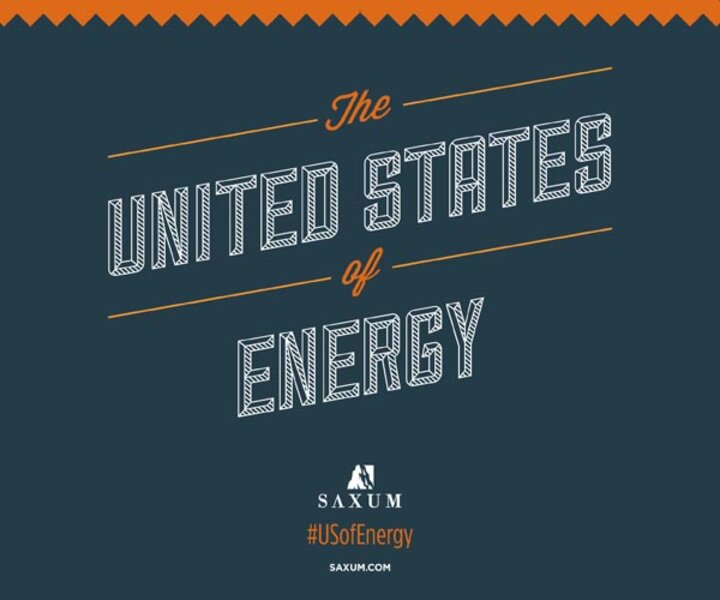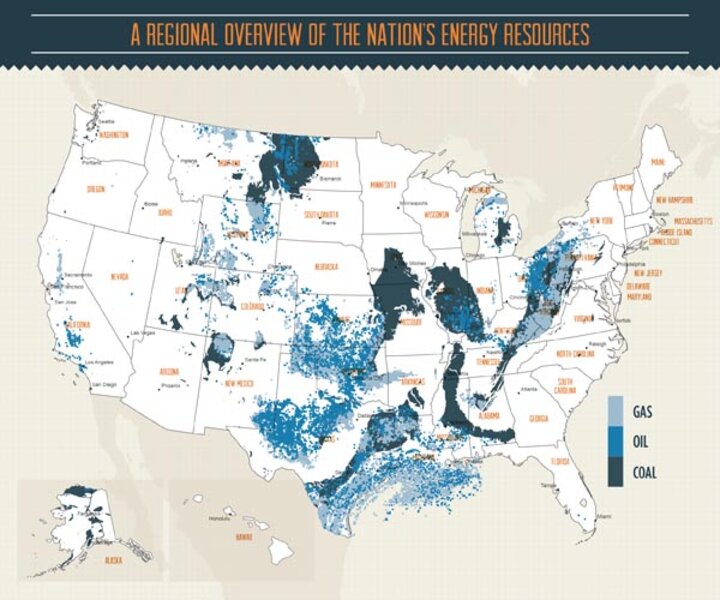American runs on fossil fuels: 82 percent of US energy consumption comes from oil, gas, and coal, formed hundreds of millions of years ago from the remains of living organisms. Innovative new drilling techniques suggest these carbon-heavy fuels will remain a significant part of the energy mix for a long time to come.
The US holds the world's largest estimated recoverable reserves of coal, in dark blue on the map (click image for larger version). Much of it lies in the Appalachian states and central and southern Illinois. After losing ground to cheap natural gas, coal has been staging a comeback recently, accounting for 40 percent or more of the nation's electricity since November 2012, compared with 25 percent from natural gas.
The breakout story of the past 10 years is oil (blue) and natural gas (light blue). Hydraulic fracturing and horizontal drilling have opened up previously inaccessible sources of so-called "unconventional" oil and gas in the Bakken formation of North Dakota, the Marcellus formation of Pennsylvania, and other formations of shale rock. The dots above show just the sites of active wells. The total recoverable resources cover even greater areas.
Sources: US Geological Survey, Alaska Department of Natural Resources, Saxum, Energy Information Administration









